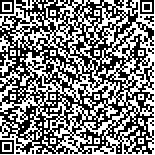俞蔼晏,常滋毓,张乃菊,等.丰富环境康复训练对脑缺血大鼠认知功能及音猬因子信号通路的影响[J].中华物理医学与康复杂志,2024,46(5):385-392
扫码阅读全文

|
| 丰富环境康复训练对脑缺血大鼠认知功能及音猬因子信号通路的影响 |
|
| |
| DOI:10.3760/cma.j.issn.0254-1424.2024.05.001 |
| 中文关键词: 脑卒中后认知功能障碍模型 脑缺血 认知功能障碍 丰富环境康复训练 |
| 英文关键词: Stroke Cognitive dysfunction Brain ischemia Enriched environments |
| 基金项目:安徽省高校科学研究项目(KJ2019A0397);蚌埠医学院研究生科研创新计划项目(Byycx22035) |
|
| 摘要点击次数: 3064 |
| 全文下载次数: 3492 |
| 中文摘要: |
| 目的 观察丰富环境康复训练(EET)对脑缺血大鼠认知功能及音猬因子(SHH)信号通路的影响。 方法 按照随机数字表法将60只成年雄性SD大鼠分为空白对照组、模型组、训练组,再按干预时间不同,细分为空白对照7 d组、空白对照14 d组、模型7 d组、模型14 d组、训练7 d组、训练14 d组,每组10只。模型7 d组及14 d组、训练7 d组及14 d组均采用传统线栓法制备大鼠脑缺血模型,训练7 d组及14 d组于造模后予以EET干预。干预7 d及14 d后,通过Morris水迷宫、跳台试验测试大鼠的认知水平,采用TUNEL染色法检测大鼠海马部位脑细胞凋亡水平,通过qRT-PCR、Western blot、免疫组化技术检测大鼠患侧海马部位SHH、Gli2、PTCH1 RNA蛋白表达水平。 结果 与训练7 d组和模型14 d组比较,训练14 d组大鼠Morris水迷宫测试的逃避潜伏期[(63.37±2.78)s]减短、平均游泳速度[(134.27±2.44)mm/s]增加、穿越平台次数[(6.70±0.95)次]增多、平台所在象限停留时间[(37.08±2.07)s]增加(P<0.05),在跳台试验中遭遇电击的次数[(3.80±0.63)次]少、平台滞留时间[(25.26±1.64)s]短(P<0.05)。TUNEL染色结果显示,训练14 d组大鼠海马细胞凋亡百分比低(P<0.05)。免疫组化结果显示,训练14 d组大鼠患侧海马SHH、Gli2蛋白表达量增加,PTCH1表达量降低(P<0.05)。 结论 EET可以显著改善脑缺血大鼠的认知功能,其机制可能与SHH信号通路的激活增强有关。 |
| 英文摘要: |
| Objective To observe any effect of an enriched environment (EET) on cognitive functioning and sonic hedgehog (SHH) signaling in rats modeling cerebral ischemia. Methods Sixty adult male Sprague-Dawley rats were randomly divided into a blank control group, a model group and a training group. A model of cerebral ischemia was established in the model and training groups by thread thrombus. The training group was given an EET. After 7 and 14 days, the rats′ cognition was tested using the Morris water maze and the platform jumping test. Apoptosis of brain cells in the hippocampus was detected by using TUNEL staining, and the expression of SHH, Gli2 and PTCH1 proteins in the hippocampus were measured using qRT-PCRs, western blotting and immunohistochemistry. Results After 14 days the average escape latency in the Morris water maze test had shortened more in the training group than in the model group, while the average swimming speed, the number of platform crossings and the time spent in the quadrant had increased significantly more. They also received fewer electric shocks and spent significantly less time on the platform in the platform jumping test on average. Apoptosis in the hippocampus after 14 days was significantly less in the training group with significantly greater expression of SHH and Gli2 protein and significantly less PTCH1 protein expression. Conclusion An EET can significantly improve cognition after cerebral ischemia, at least in rats. Its mechanism may be related to enhanced activation of the SHH signaling pathway. |
|
查看全文
查看/发表评论 下载PDF阅读器 |
| 关闭 |